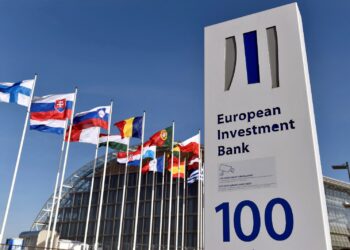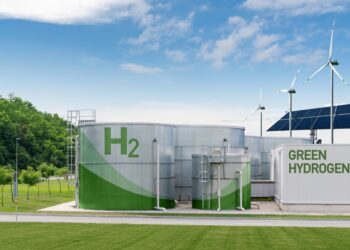
By Sofia Shino- Nambahu
The European Union’s Carbon Border Adjustment Mechanism (CBAM), set to take effect in 2026, is a policy designed to combat carbon leakage and promote fair competition by imposing tariffs on imports from countries with weaker climate policies.
While CBAM presents challenges for carbon-intensive exporters, it also offers Namibia a unique opportunity to strengthen its economy, attract investment, and deepen trade ties with the EU by capitalizing on its green hydrogen sector.
CBAM applies to goods such as iron and steel, cement, aluminium, fertilizers, hydrogen, and electricity, encouraging sustainable production methods worldwide.
As the EU enforces stricter climate policies, nations exporting to Europe must align with sustainability standards to maintain market access. This policy shift could disrupt trade relationships but also incentivize countries to adopt greener industrial practices.
The EU has long been a major trading partner for Africa, accounting for 26% of the continent’s exports, including raw minerals and primary sector goods. Namibia’s exports to the EU have grown significantly, reaching over €404 million (N$20 billion) in 2023, with fish (38.3%), copper (23.2%), and ores, slag, and ash (12.6%) being key exports.
Fortunately, many of Namibia’s industries have a lower carbon footprint than other developing economies, making compliance with CBAM less challenging. However, proactive strategies are needed to shield exports from increased costs and ensure continued competitiveness.
Namibia currently enjoys duty-free and quota-free access to the EU under the Economic Partnership Agreements (EU-EPAs). Maintaining this advantage will require aligning with global decarbonization efforts. By ensuring new industries are low-carbon and integrating renewable energy into production processes, Namibia can enhance its export resilience.
CBAM may also create disparities within regional trade blocs such as the Southern African Development Community (SADC), the African Continental Free Trade Area (AfCFTA), and the Southern African Customs Union (SACU).
Many member states depend on Namibia’s ports and trade corridors for exporting carbon-intensive goods. If these goods are subject to CBAM tariffs, Namibia could face indirect economic impacts. To mitigate this, Namibia must assess the carbon footprint of its regional trade flows and leverage its emerging green hydrogen sector to maintain economic growth.
Namibia’s vast solar and wind energy resources position it as a key player in the global green economy. Its ambitious green hydrogen projects could enable the country to export clean energy and its derivatives, such as green ammonia, Direct Reduced Iron (DRI), and e-fuels, to industries seeking to lower their CBAM liabilities.
By expanding production and securing export agreements, Namibia can become a preferred supplier of low-carbon products to the EU.
For Namibian industries, transitioning to renewable energy and low-carbon technologies will enhance sustainability and reduce the cost of CBAM compliance. Strengthening collaboration within SADC, AfCFTA, and SACU to align climate policies and develop green industrial strategies will further bolster Namibia’s competitiveness in global markets.
To fully capitalize on CBAM, Namibia should accelerate the development of solar and wind energy projects, establish a carbon pricing mechanism, and engage with the EU to secure trade agreements that recognize its green energy potential.
Supporting green industrialization initiatives will encourage industries to adopt cleaner technologies, enhance export competitiveness, and cement Namibia’s role as a leader in the global energy transition.
The United Kingdom plans to implement a similar measure in 2027, expanding beyond CBAM’s current scope to include glass and ceramics, while Australia is considering similar regulations. As CBAM gains traction globally, Namibia must act swiftly to implement mitigation measures that protect its industries and ensure long-term trade resilience.
By embracing green hydrogen and renewable energy, Namibia can turn CBAM into an opportunity for economic growth, sustainable industrialization, and strengthened trade partnerships with the EU and beyond.
*Sofia Shino- Nambahu is a Senior Financial Analyst at the Namibia Green Hydrogen Programme











